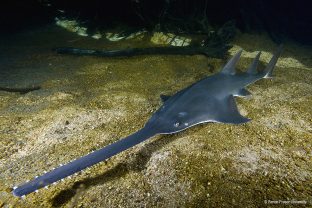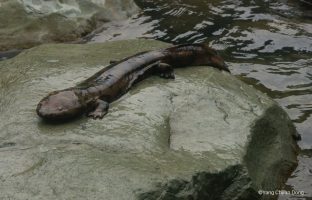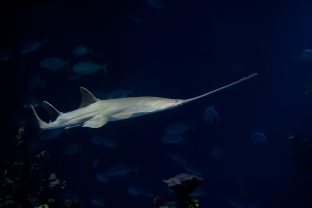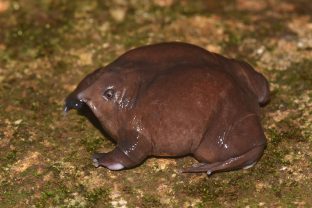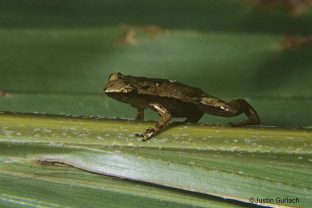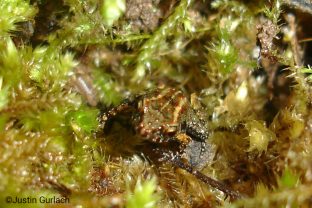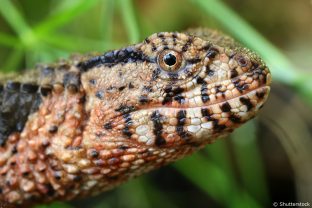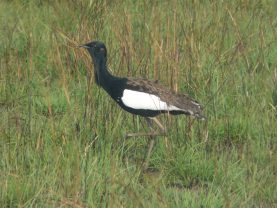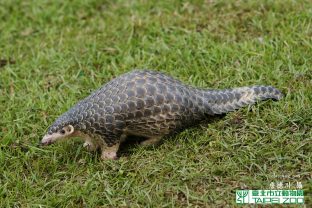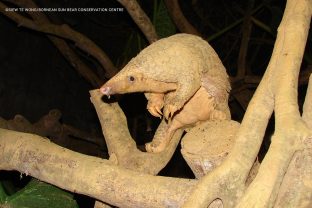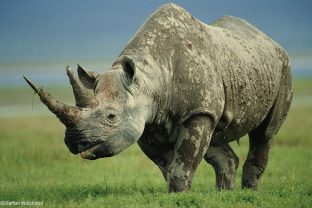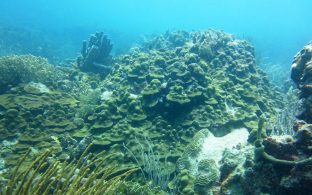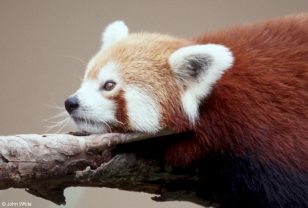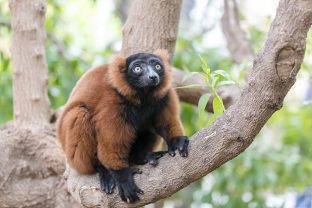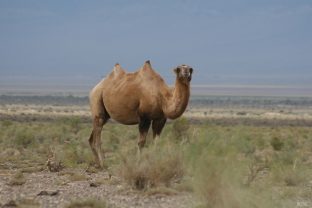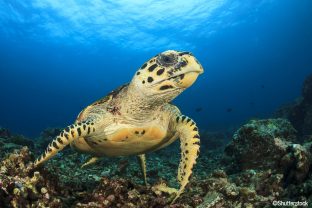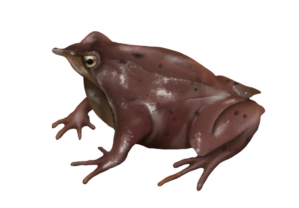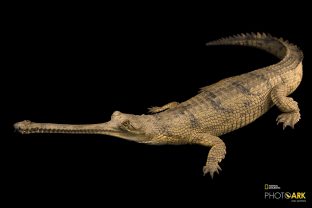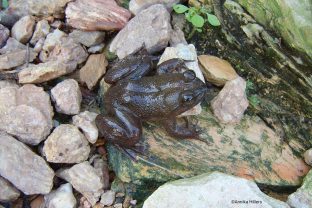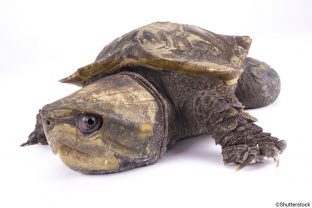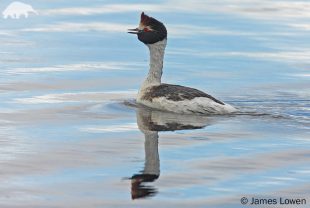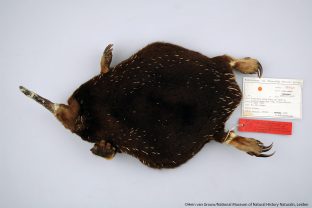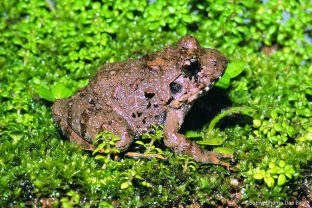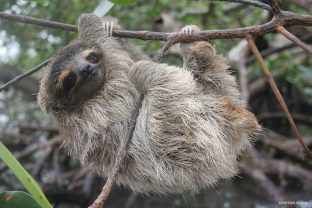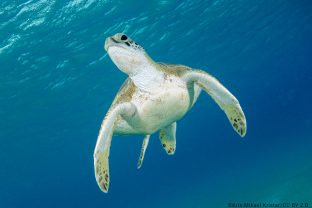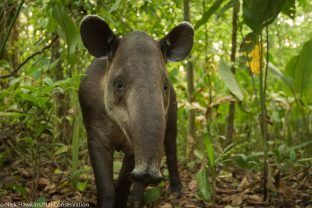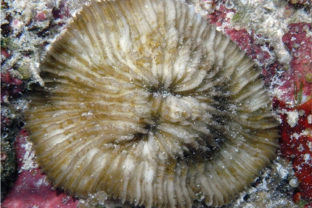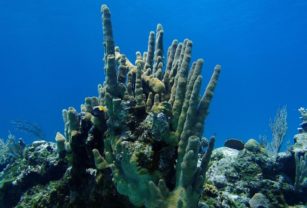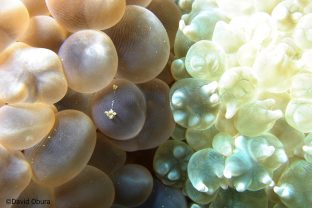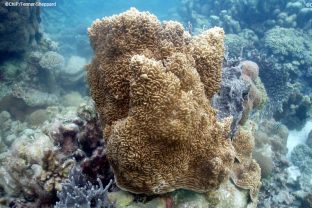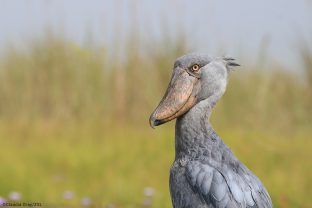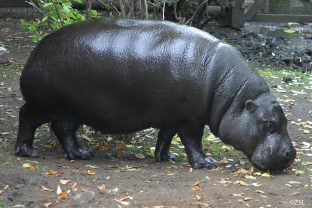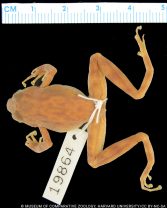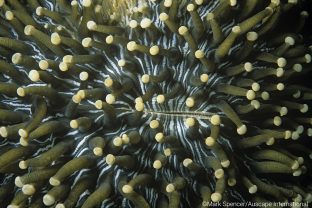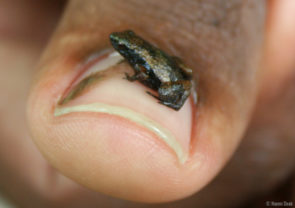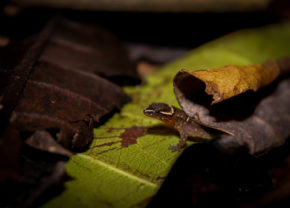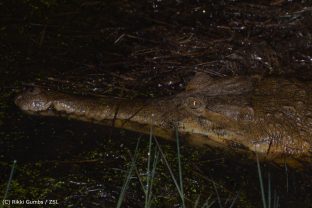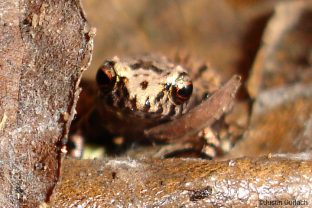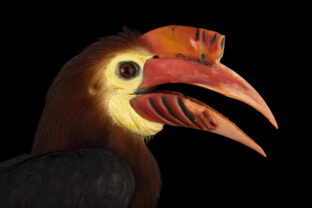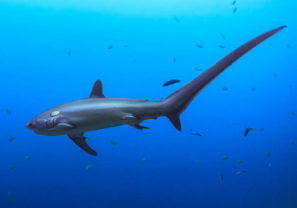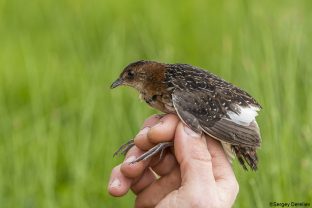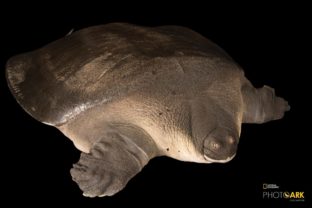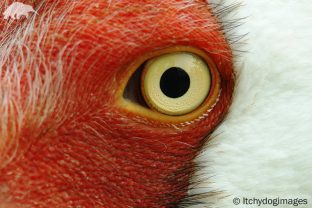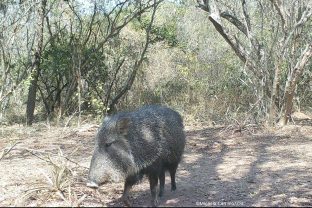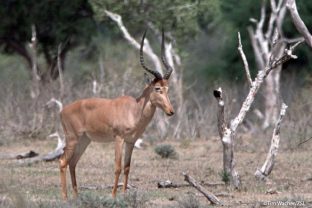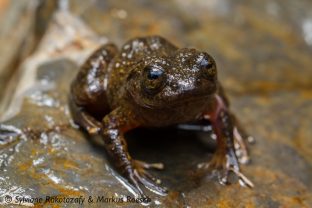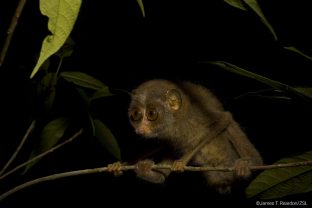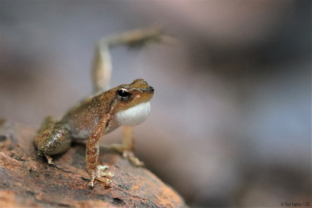FOCAL EDGE SPECIES
Largetooth Sawfish
Pristis pristis
The largetooth sawfish not only is number 1 on the EDGE Shark list, but also has the highest-ranking score of any EDGE species!
Conservation Attention
Good
Chinese Giant Salamander
Andrias davidianus
The Chinese giant salamander is the world’s largest amphibian, growing up to 1.8 metres long, with a large tail comprising almost 60% of the body length.
Conservation Attention
Good
Green Sawfish
Pristis zijsron
The green sawfish is the largest of all existing sawfishes, reaching up to 7.3 meters in length and its teethed rostra accounts for almost one third of that length!
Conservation Attention
Low
Purple Frog
Nasikabatrachus sahyadrensis
The purple frog (or pig-nosed frog) spends much of its life underground, emerging briefly for a few days each year at the start of the monsoons to breed.
Conservation Attention
Low
Seychelles Palm Frog
Sechellophryne pipilodryas
The Critically Endangered Seychelles palm frog was only described as a new species in 2002, and details of its breeding behaviour are currently unknown.
Conservation Attention
Very Low
Thomasset’s Seychelles Frog
Sooglossus thomasseti
Thomasset’s frog is the largest of the Seychelles’ native frogs, reaching a maximum length of 55 mm, and is Critically Endangered.
Conservation Attention
Low
Chinese Crocodile Lizard
Shinisaurus crocodilurus
There are perhaps no more than 1,000 individuals of the Endangered Chinese crocodile lizard — which is found in southern China and northern Vietnam — remaining in the wild today.
Conservation Attention
Very Low
Bengal Florican
Houbaropsis bengalensis
This otherwise reclusive bird is best known for its elaborate courtship display, where the male’s black and white plumage is shown off to good effect in short arching display flights, as well as choreographed strutting – with fluffed up neck feathers and a head pumping action, to attract females.
Conservation Attention
Medium
Chinese pangolin
Manis pentadactyla
Pangolins are the most trafficked mammals in the world, and the Chinese pangolin may be the most endangered of them all.
Conservation Attention
Low
Sunda pangolin
Manis javanica
Pangolins are the world’s most trafficked mammal.
Conservation Attention
Medium
Black Rhinoceros
Diceros bicornis
The black rhinoceros has four subspecies, one of which was declared extinct in 2011, with two others critically endangered.
Conservation Attention
Good
Mountainous Star Coral
Orbicella faveolata
Subject to a recent name change (previously known as Montastrea faveolata), Orbicella faveolata was distinguished from Orbicella annularis in 1994.
Conservation Attention
Low
Red panda
Ailurus fulgens
The scientific name of this rare and beautiful species literally means ‘fire-coloured cat’.
Conservation Attention
Good
Red ruffed lemur
Varecia rubra
The red ruffed lemur is one of the largest species of lemur.
Conservation Attention
Good
Philippine Eagle
Pithecophaga jefferyi
The Philippine Eagle is one of the world’s largest, most powerful birds of prey.
Conservation Attention
Medium
Wild Camel
Camelus ferus
The Wild Camel, known locally as Khavtgai, can withstand drought, food shortages, and even radiation from nuclear weapons testing.
Conservation Attention
Low
Hawksbill Turtle
Eretmochelys imbricata
Despite the Hawksbill turtle being a truly global species, females show the incredible behaviour of natal homing, returning to their original breeding grounds due to ‘breeding ground fidelity’.
Conservation Attention
Good
Northern Darwin’s Frog
Rhinoderma rufum
The Northern Darwin’s frog is one of only two frogs in the world which exhibit ‘mouth brooding’ parental care, whereby the young undergo part of their development in the parent’s mouth. It is possible this species is now extinct.
Conservation Attention
Very Low
Gharial
Gavialis gangeticus
The Critically Endangered gharial is an unmistakable crocodile on the brink of extinction. It has long, thin jaws which it uses to catch fish and males have a large, bulbous growth, known as a ‘ghara’, on the tip of their snout.
Conservation Attention
Good
Togo Slippery Frog
Conraua derooi
Reaching moderate sizes of 75-85 mm, it is not immediately obvious that the Togo slippery frog is a close relative of the world’s largest frog, the Goliath frog.
Conservation Attention
Low
Big-headed Turtle
Platysternon megacephalum
As its name suggests, the big-headed turtle has a disproportionately large head compared to its small body. Its head is so large, in fact, that it cannot be retracted into its shell!
Conservation Attention
Low
Hooded Grebe
Podiceps gallardoi
Only discovered in 1974 the Hooded Grebe is found in regions across Argentina and possibly Chile.
Conservation Attention
Medium
Attenborough’s long-beaked echidna
Zaglossus attenboroughi
Attenborough’s long-beaked echidna, also known as Sir David’s Long-beaked Echidna, is the smallest and probably most threatened of the three long-beaked echidna species. Echidnas and platypus are the only mammals to lay eggs.
Conservation Attention
Very Low
Toad-skinned Frog
Walkerana phrynoderma
The Critically Endangered toad-skinned frog is endemic to the Western Ghats of India. The family of frogs to which this species belongs diverged from all other amphibians over 80 million years ago.
Conservation Attention
Low
Pygmy Three-toed Sloth
Bradypus pygmaeus
The pygmy three-toed sloth is the smallest of the three-toed sloths, and was only recognised as a distinct species in 2001.
Conservation Attention
Low
Green Turtle
Chelonia mydas
The green turtle is a truly global species, occurring across the tropics and subtropics. Females show the incredible behaviour of natal homing, returning to the beaches where they hatched to lay their own eggs!
Conservation Attention
Good
Baird’s Tapir
Tapirus bairdii
Baird’s tapir is the largest indigenous mammal in Central America. Tapirs are a ‘primitive’ group that resemble the ancestor of rhinos and horses, and have remained morphologically similar for the last 35 million years.
Conservation Attention
Medium
Lithophyllon ranjithi
Lithophyllon ranjithi
This endangered coral species has a range which is restricted to one small area off the coast of north-eastern Borneo where it is easily misidentified as a closely related species, Lithophyllon undulatum.
Conservation Attention
Very Low
Pillar Coral
Dendrogyra cylindrus
Commonly known as Pillar Coral, colonies of this species are found in flat, sheltered locations ranging from the southern tip of Florida down to the coast of Venezuela.
Conservation Attention
Very Low
Sibree’s Dwarf Lemur
Cheirogaleus sibreei
Sibree’s dwarf lemur was believed extinct following the destruction of its first recorded forest habitat, though they were found in their high altitude habitat on Mount Maharira in Ranomafana National Park, Madagascar, as well as in Tsinjarivo, where it may be restricted by rivers.
Conservation Attention
Very Low
Pearl Bubble Coral
Physogyra lichtensteini
Commonly known as the Pearl Bubble Coral, Physogyra lichtensteini is distinct due to its fleshy vesicles which are on display throughout the day providing refuge for several marine invertebrates including shrimp.
Conservation Attention
Very Low
Elephant Skin Coral
Pachyseris rugosa
Commonly named as the Elephant Skin Coral due to its wrinkly appearance, Pachyseris rugosa is a fairly common species on tropical reef systems within its range.
Conservation Attention
Very Low
Shoebill
Balaeniceps rex
This large waterbird is unmistakable due to its unique ‘shoe-shaped’ bill which gives it an almost prehistoric appearance – reminding us of birds’ dinosaur ancestry.
Conservation Attention
Good
Pygmy Hippopotamus
Choeropsis liberiensis
The pygmy hippo is the smaller, reclusive and nocturnal cousin to the more widely known common hippo.
Conservation Attention
Medium
Du Toit’s Torrent Frog
Arthroleptides dutoiti
There have been numerous surveys to locate Du Toit’s torrent frog since its last record in 1962, but all attempts have failed to find the species.
Conservation Attention
Very Low
Heliofungia actiniformis
Heliofungia actiniformis
Unlike many Scleractinian corals, adult polyps of Heliofungia are solitary and free living.
Conservation Attention
Medium
Gardiner’s Seychelles Frog
Sechellophryne gardineri
Gardiner’s Seychelles frog is one of the world’s smallest frog species, with adults reaching the size of just 1 cm! This species is ground-dwelling and forages at night for small invertebrates such as mites.
Conservation Attention
Very Low
Colombian Dwarf Gecko
Lepidoblepharis miyatai
Following its discovery in 1964, the Colombian dwarf gecko had not been seen again until a new population was recently discovered more than 100 km from the original location.
Conservation Attention
Very Low
West African Slender-snouted Crocodile
Mecistops cataphractus
The West African slender-snouted crocodile is known for its unmistakable long and slender snout, which lacks any bony ridges.
Conservation Attention
Medium
Seychelles Frog
Sooglossus sechellensis
The Seychelles frog is an incredibly tiny frog, with males reaching a maximum length of just 15 mm.
Conservation Attention
Very Low
Rufous-headed Hornbill
Rhabdotorrhinus waldeni
This colourful and distinctive bird is one of the most endangered Hornbills.
Conservation Attention
Very Low
Pelagic Thresher
Alopias pelagicus
This species has an extraordinarily long caudal fin it uses a whip to stun its prey, and distinctive prominent eyes. Although it has a circumpolar range, little is known on its biology and ecology.
Conservation Attention
Low
White-winged Flufftail
Sarothrura ayresi
The White-winged Flufftail is a very rare and tiny African bird which breeds north of the equator in Ethiopia and then migrates south to Zambia, Zimbabwe and South Africa.
Conservation Attention
Medium
Cantor’s Giant Softshell
Pelochelys cantorii
Cantor’s giant softshell is an exceptionally large freshwater turtle, with individuals known to reach over 1 metre in length and weigh more than 100 kilograms! Sadly, these extraordinary turtles are on the brink of extinction.
Conservation Attention
Medium
Siberian Crane
Leucogeranus leucogeranus
This large white crane, with its elegant long legs and neck, stands at well over a metre in height.
Conservation Attention
Medium
Chacoan Peccary
Catagonus wagneri
The Chacoan peccary is a pig-like mammal with a long, flexible snout and a coat of grey brown bristly fur, and is the largest of the three living species of peccary.
Conservation Attention
Low
Hirola
Beatragus hunteri
Perhaps the world’s rarest and most endangered antelope, the hirola is the sole survivor of a formerly diverse group, and is often referred to as a living fossil.
Conservation Attention
Low
Madagascar Frog
Mantidactylus pauliani
The Critically Endangered Madagascar frog was described in 1974, but was not recorded again for over 40 years until 2010.
Conservation Attention
Very Low
Red Slender Loris
Loris tardigradus
The red slender loris has extremely thin arms and legs and is arboreal (tree dwelling).
Conservation Attention
Low
Kottigehar Dancing Frog
Micrixalus kottigeharensis
The Kottigehar Bush Frog is only known from the type locality; Kottigehar, Kadur and from a recently discovered population at Bhadrea, India
Conservation Attention
Very Low
